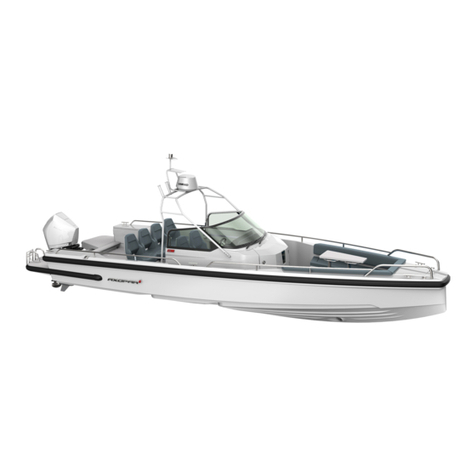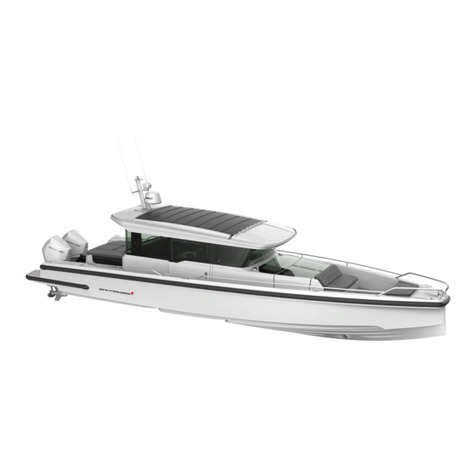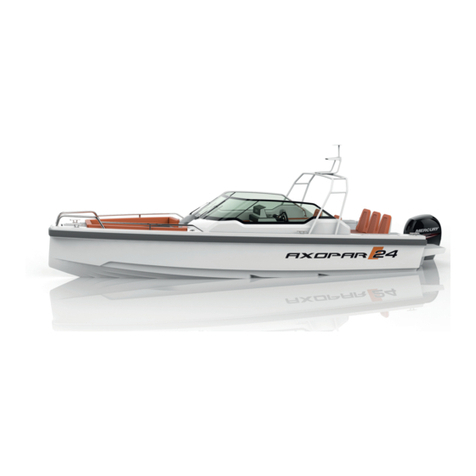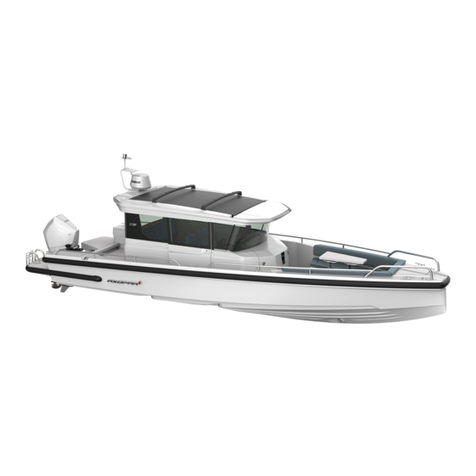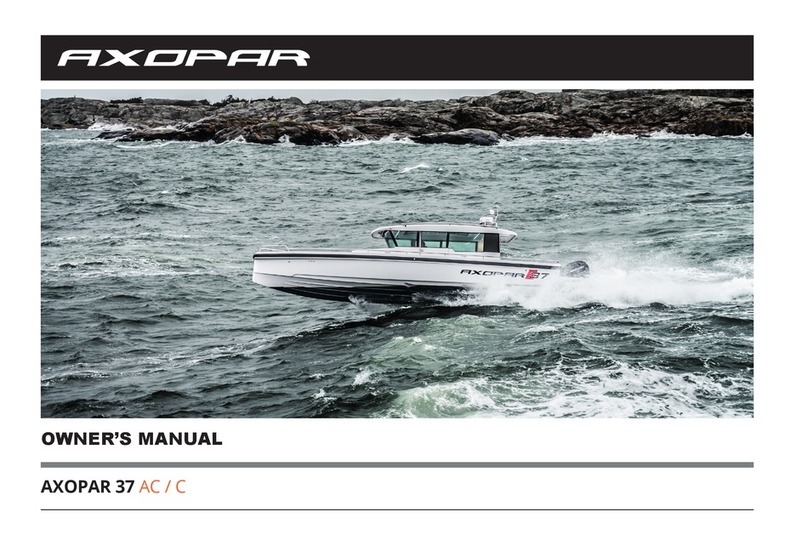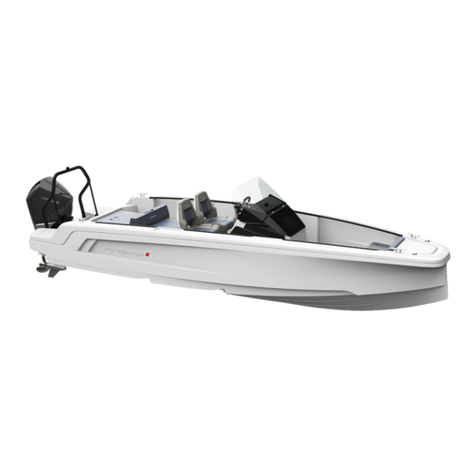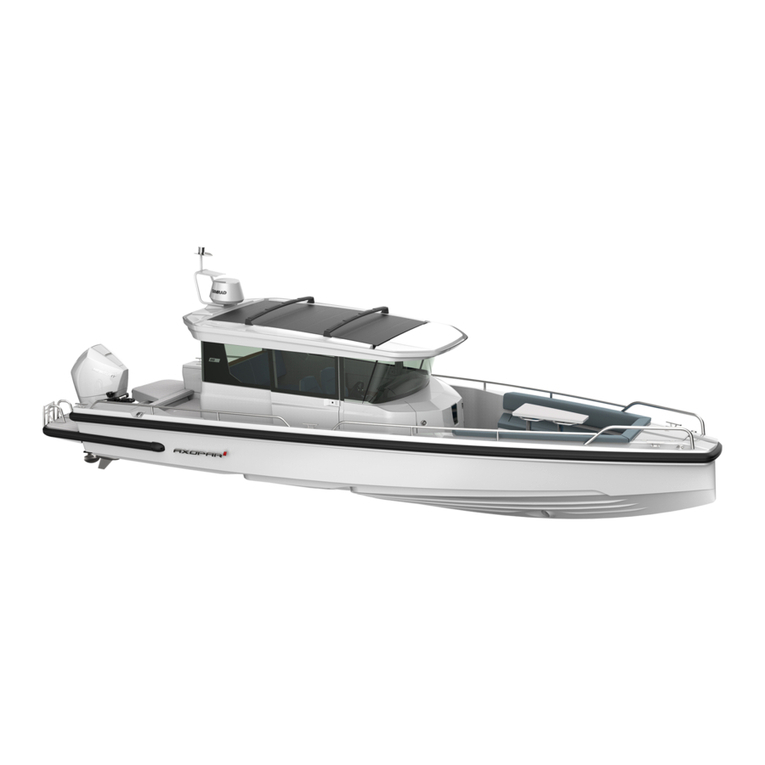
Table of Contents
4.2.7. Batteries................................................................................................................................27
4.2.7.1. Charging the batteries............................................................................................ 28
4.2.7.2. Charging status ......................................................................................................28
4.2.7.3. Winter storage ....................................................................................................... 28
4.2.7.4. Cleaning the batteries ............................................................................................28
4.2.8. 110/230 V system.................................................................................................................29
4.2.9. Fuel system.......................................................................................................................... 30
4.2.9.1. Refueling the boat...................................................................................................31
4.3. Optional equipment.........................................................................................................................31
4.3.1. Fresh water system..............................................................................................................31
4.3.2. Septic system....................................................................................................................... 32
4.3.2.1. Toilet seat................................................................................................................ 33
4.3.2.2. Septic tank.............................................................................................................. 34
4.3.2.3. Shower sump pump................................................................................................34
4.3.3. Heating system.....................................................................................................................34
4.3.4. Bow thruster......................................................................................................................... 35
4.3.5. Anchor windlass................................................................................................................... 35
4.3.6. LPG system.......................................................................................................................... 36
4.3.6.1. Lighting the LPG cooker......................................................................................... 37
4.3.6.2. Using the LPG cooker............................................................................................ 37
4.3.7. Solar panels..........................................................................................................................38
5. Transportation.........................................................................................................40
5.1. Lifting the boat................................................................................................................................40
5.2. Transporting the boat..................................................................................................................... 41
6. Operation................................................................................................................ 43
6.1. Handling devices............................................................................................................................ 43
6.1.1. Steering console...................................................................................................................43
6.1.2. Windscreen wipers ..............................................................................................................44
6.1.3. Steering system....................................................................................................................45
6.1.3.1. Checking and topping up oil ................................................................................ 45
6.1.3.2. Steering maintenance ...........................................................................................45
6.1.3.3. Steering console switch panel................................................................................ 45
6.1.4. Starting the engine............................................................................................................... 46
6.2. Swivel seat - Driver and passenger seats..................................................................................... 46
6.3. Inspecting the boat......................................................................................................................... 47
6.3.1. Checklist: Regular inspection before leaving harbor............................................................47
6.3.2. Checklist: After using the boat............................................................................................. 48
6.4. Handling the boat........................................................................................................................... 48
6.4.1. Checklist: Boat handling before leaving harbor .................................................................. 48
6.4.2. Leaving the jetty ..................................................................................................................48
Axopar 37 XC Document ID: 37XC202004EN
Owner's Manual
© 2020 Axopar Boats Page 2
-
-






